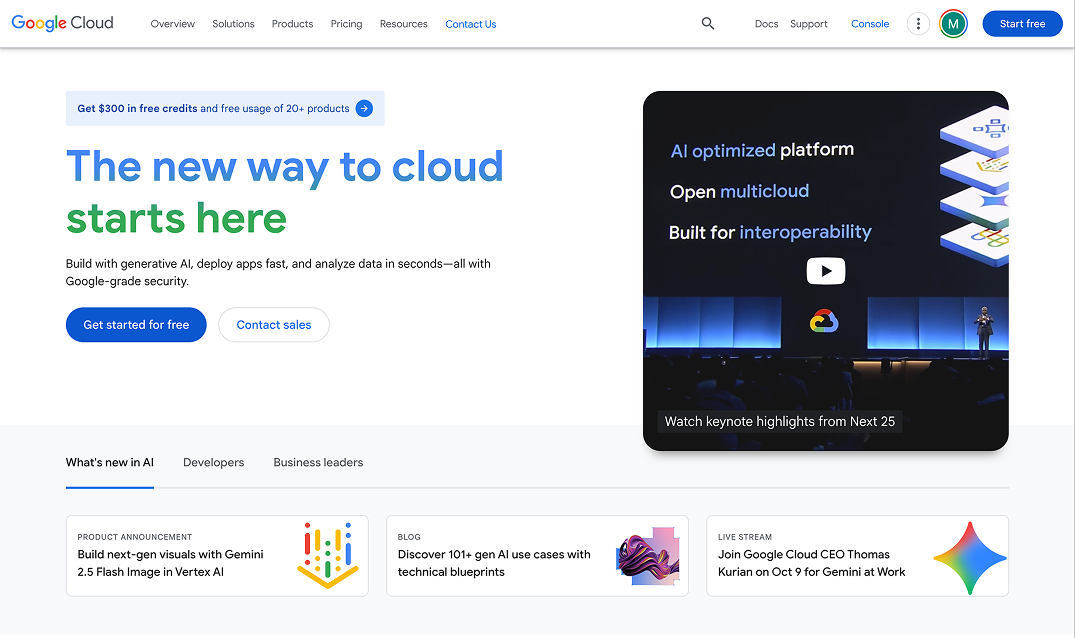Google BigQuery is the serverless data warehouse that powers analytics for millions of organizations, processing hundreds of petabytes of data daily. It enables teams to run complex analytical queries on massive datasets and get results in seconds, not hours. Companies that migrate to BigQuery often see a 40-60% reduction in total cost of ownership compared to traditional on-premise data warehouses, while simultaneously accelerating their time-to-insight.
Why BigQuery is the Engine of Modern Analytics
Blistering Speed at Any Scale: BigQuery’s architecture separates storage and compute, allowing it to scale both resources independently and automatically. It parallelizes every query across thousands of machines, making it possible to analyze a terabyte of data in a few seconds and a petabyte in minutes. This is performance that traditional, node-based warehouses simply cannot match without massive investment and complex tuning.
Zero Infrastructure, All Insight: As a fully serverless platform, BigQuery handles all infrastructure management—provisioning, scaling, and maintenance—automatically. Your team is completely freed from the complexities of managing clusters. You just load your data and start querying. This focus on usability allows teams to concentrate on generating insights, not on database administration.
AI and ML Built-In: BigQuery is not just a warehouse; it’s an AI platform. With BigQuery ML, you can build and train machine learning models directly on your data using simple SQL commands. This eliminates the need to move massive datasets to separate ML platforms, dramatically simplifying and accelerating the process of building predictive analytics into your business processes.
Real-World Strategic Metrics
- Query Performance: Analyze 1 TB of data in ~1 second and 1 PB in ~3 minutes.
- Cost Reduction: Achieve 40-60% lower TCO compared to legacy data warehouse solutions.
- Scalability: Seamlessly scale from gigabytes to hundreds of petabytes without performance degradation.
- ML Model Training: Build and train ML models up to 10x faster with BigQuery ML compared to traditional methods.
- Generous Free Tier: Process up to 1 TB of queries and store 10 GB of data for free every month.
Who Needs This to Win
Ideal Customer Profile:
- Data-driven organizations of any size, from startups to global enterprises.
- Companies looking to migrate from slow, expensive, on-premise data warehouses.
- SaaS businesses that need to provide fast, reliable analytics dashboards to their customers.
- Any team that needs to run complex analytics on large, streaming datasets in near real-time.
Decision Maker Roles:
- Chief Data Officers (CDOs) and VPs of Data tasked with building a modern, scalable data stack.
- Data Engineering Leaders responsible for designing and managing data pipelines and warehouses.
- BI & Analytics Directors who need to empower their teams with self-service analytics capabilities.
- CTOs evaluating cloud platforms for a long-term strategic investment in data.
Common Use Cases That Drive a Competitive Advantage
Enterprise Business Intelligence: Centralize data from all your business systems (CRM, ERP, marketing platforms) into a single source of truth. Power interactive dashboards in tools like Looker or Tableau that give executives a real-time, 360-degree view of the business.
Real-Time Analytics: Ingest streaming data from applications, IoT devices, or clickstreams and analyze it as it arrives. Power live dashboards, detect anomalies in real time, and trigger immediate actions based on incoming data.
Predictive Analytics & AI: Build machine learning models to predict customer churn, forecast demand, or detect fraud directly within your data warehouse. Use these predictions to drive proactive business decisions and automate intelligent workflows.
Scalable Log Analytics: Ingest and analyze massive volumes of application and security logs to monitor performance, troubleshoot issues, and identify security threats. Perform complex analysis on years of historical log data in seconds.
Critical Success Factors
Pricing Reality Check:
- On-Demand Analytics: The default model, where you pay for the amount of data processed by your queries (~$6 per TB). The first 1 TB per month is free.
- Capacity-Based Pricing: For predictable workloads, you can reserve processing capacity (“slots”) for a flat rate, which can be more cost-effective.
- Storage Costs: Extremely affordable, at ~$0.02 per GB per month for active data, which drops by 50% for data that hasn’t been modified for 90 days.
- The Catch: Unoptimized queries can be very expensive. A
SELECT *on a multi-terabyte table can cost hundreds of dollars. Cost control and governance are not optional; they are essential.
Implementation Requirements:
- A solid understanding of SQL.
- Crucially, you must learn and implement table partitioning and clustering. This is the single most important factor in controlling query costs.
- Set up a data ingestion pipeline using tools like Fivetran, Airbyte, or Google’s native services.
- Establish budgets and alerts within Google Cloud to prevent unexpected cost overruns.
Integration Ecosystem
Google Cloud Native:
- Deep, seamless integration with the entire GCP ecosystem, including Looker (BI), Vertex AI (ML), Dataflow (streaming), and Cloud Storage.
BI & Visualization:
- Native connectors for all major BI tools, including Tableau, Power BI, Qlik, and Looker.
Data Stack:
- The industry standard for modern data stacks, with first-class support for tools like dbt, Fivetran, Airbyte, and Stitch.
The Bottom Line
Google BigQuery is the serverless analytics powerhouse that sets the standard for speed, scale, and ease of use in the cloud. It makes massive-scale data analysis accessible to every organization, not just those with huge teams of database administrators.
The Honest Truth: The power of BigQuery comes with a responsibility. If you don’t actively manage your query patterns and data structures, you can easily run up a massive bill. The key to success is to never SELECT * and to always partition your tables by date. But if you embrace these best practices, BigQuery is transformative. It’s the difference between waiting hours for a report and having a real-time conversation with your data. For any organization serious about leveraging data as a strategic asset within the Google Cloud ecosystem, there is no better foundation to build upon.
